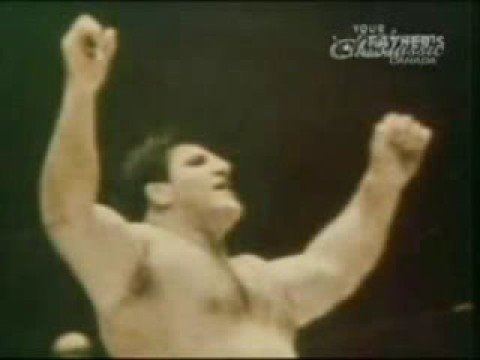R.I.P. Bruno Sammartino, professional wrestling icon

Bruno Sammartino, one of the biggest stars in professional wrestling history, has died. No specific cause of death has been provided, but according to CBS’ Pittsburgh affiliate, Sammartino had been battling “health issues” for the last two months and passed away with his wife and two sons by his side. He was 82.
Before The Rock and Steve Austin, before Hulk Hogan and Ric Flair, there was Bruno Sammartino, a wrestling icon so successful and beloved that he arguably served as the foundation for everything the WWE eventually became. His unbelievable real-life story was as befitting of a conquering working-class hero as you can get: Born in the Abruzzo region of Italy in 1935, Sammartino endured a horrific childhood, during which two of his older siblings died and he and his mother were forced to flee from their town after it was invaded by Nazis. They eventually made their way to America in 1950, rejoining Sammartino’s father (who had immigrated years prior) in Pittsburgh, the city he’d come to embody and that would provide the launching pad for his road to wrestling stardom.
In 1959, Sammartino began taking part in bodybuilding competitions, where he was scouted by a local wrestling promoter. He had his first match later that year for Studio Wrestling, a local program televised in Pittsburgh. Just one one month later, he was performing in Madison Square Garden, the northeast’s Mecca of wrestling, and by 1963, he pinned “Nature Boy” Buddy Rogers in 48 seconds to became the second ever champion of the World Wide Wrestling Federation, the company founded by Vincent J. McMahon that would evolve into the current WWE under his son. That bulldozing victory was the start of a nearly eight-year championship reign that remains unmatched to this day, and by modern wrestling standards, is frankly inconceivable.
But Sammartino was an immensely successful draw for the then struggling WWWF, headlining and selling out Madison Square Garden dozens of times. It’s easy to see why he became such a unifying, energizing figure: He was a living embodiment of the American dream. Hard working, no-nonsense, and without the ostentatious flair of wrestling’s more fantastical characters, he spoke to the large immigrant communities in the cities to which the WWWF catered. When the time came for him to finally lose his belt in 1971, it was to another foreigner, this one of the dastardly Russian variety, Ivan Koloff. Many in the Madison Square Garden crowd reportedly wept as a defeated Sammartino left the ring; however, it wouldn’t take long until another virtuous immigrant success story would rise to take his place, as the Puerto Rican Pedro Morales defeated Koloff three weeks later.
After a short break, Sammartino returned to the WWWF in 1973, reclaiming his championship and embarking on a second reign that lasted for more than three years. It was during this run that Stan Hansen, a wild Texan brawler and wrestling legend in his own right, accidentally broke Sammartino’s neck after dropping the Italian megastar on his head. Unbelievably, Sammartino continued to wrestle and finished the match as intended, defeating Hansen and retaining his title. It wouldn’t be until April 1977 that the battered Sammartino would lose his belt, this time in controversial fashion to the cheating Superstar Billy Graham, who in turn served as the stepping stone for the crowning of Bob Backlund, the WWWF’s next shot at creating a champ as long-reigning and squeaky clean as Sammartino.
His championship days might have been over, but some of Sammartino’s most memorable feuds and matches were still to come. In 1980, for example, he was betrayed in brutal, bloody fashion by Larry Zbysko, a young wrestler who Sammartino had trained in Pittsburgh. Zbysko instantly became the most reviled figure in wrestling—to the point that, according to him, he was constantly being assaulted by audiences and even got stabbed in the butt. More than 36,000 fans reportedly packed into New York’s Shea Stadium to watch Sammartino get his revenge on his traitorous student. The two battled inside a steel cage, serving as the main event for the first megashow of the newly redubbed World Wrestling Federation and paving the way for Vince McMahon’s WrestleMania vision. After the younger McMahon settled a lawsuit with the aging star, Sammartino continued to wrestle for WWF throughout the decade, feuding with now-iconic performers like Macho Man Randy Savage and Rowdy Roddy Piper. In 1987, he wrestled his final match with the company, teaming with Hulk Hogan.
After parting ways with the WWF, Sammartino became one of its most famous critics, lambasting Vince McMahon’s creative and business practices. He wouldn’t make up with the company until 2013, when after several previous invitations, he finally accepted an offer to be inducted into the WWE’s hall of fame. There has never been a figure more deserving of the honor, and there likely won’t ever be again.